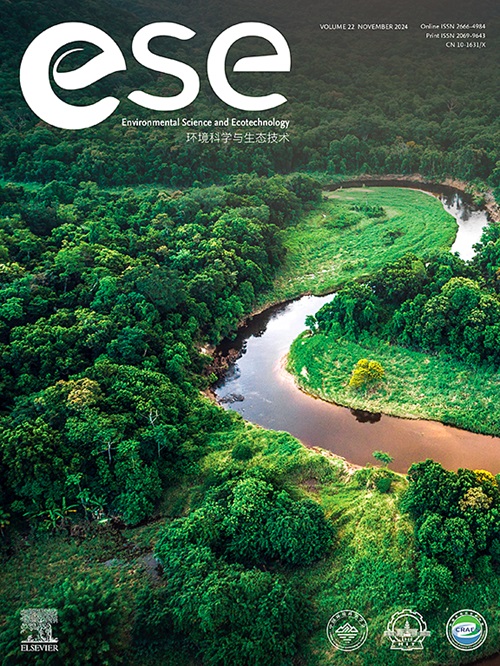追踪超大城市景观中的二氧化碳排放:超越城市总体结构异质性和缓解
IF 14
1区 环境科学与生态学
Q1 ENVIRONMENTAL SCIENCES
引用次数: 0
摘要
城市因其大量的碳排放而在全球减缓气候变化努力中处于中心地位。有效的、以证据为基础的气候政策需要详细了解城市碳代谢,从而确定有针对性的缓解途径并准确评估可持续性。然而,碳流如何在城市内的空间和部门分布一直不明确,这阻碍了有针对性的气候行动,特别是在快速发展的特大城市。在这里,我们绘制了中国特大城市碳排放的变化图景,并表明这些排放的问责制经历了深刻的空间和部门转型。我们发现,排放责任的主要负担已经从以生产为重点的部门,如工业和能源生产,转移到以消费为基础的最终用户,包括住宅和商业建筑。这一转变是由会计边界的结构性转变推动的,从直接化石燃料燃烧(范围1)到电力消耗的间接排放(范围2),从根本上重新分配了城市地区的碳责任。我们的景观级框架揭示了最终用途部门的隐性碳依赖,并提供了一个公平有效的核算模型,从而能够设计针对特定区域的战略,以解决城市碳排放的复杂性。本文章由计算机程序翻译,如有差异,请以英文原文为准。

Tracing CO2 emissions across megacity landscapes: beyond citywide totals to structural heterogeneity and mitigation
Cities are central to global climate change mitigation efforts due to their substantial carbon emissions. Effective, evidence-based climate policy requires a detailed understanding of urban carbon metabolism, allowing for targeted mitigation pathways and the accurate evaluation of sustainability. However, a persistent lack of clarity on how carbon flows are distributed spatially and sectorally within cities has hindered tailored climate action, particularly in rapidly developing megacities. Here we map the shifting landscape of carbon emissions in Chinese megacities and show that accountability for these emissions has undergone a profound spatial and sectoral transformation. We found that the primary burden of emission responsibility has moved from production-focused sectors, such as industry and energy generation, to consumption-based end-users, including residential and commercial buildings. This transition is driven by a structural shift in accounting boundaries from direct fossil fuel combustion (Scope 1) to indirect emissions from electricity consumption (Scope 2), fundamentally redistributing carbon liability across urban districts. Our landscape-level framework reveals the hidden carbon dependencies of end-use sectors and provides a model for equitable and effective accounting, enabling the design of region-specific strategies to address the complexities of urban carbon emissions.
求助全文
通过发布文献求助,成功后即可免费获取论文全文。
去求助
来源期刊

Environmental Science and Ecotechnology
Multiple-
CiteScore
20.40
自引率
6.30%
发文量
11
审稿时长
18 days
期刊介绍:
Environmental Science & Ecotechnology (ESE) is an international, open-access journal publishing original research in environmental science, engineering, ecotechnology, and related fields. Authors publishing in ESE can immediately, permanently, and freely share their work. They have license options and retain copyright. Published by Elsevier, ESE is co-organized by the Chinese Society for Environmental Sciences, Harbin Institute of Technology, and the Chinese Research Academy of Environmental Sciences, under the supervision of the China Association for Science and Technology.
 求助内容:
求助内容: 应助结果提醒方式:
应助结果提醒方式:


